Maternal Blood Adipokines and Their Association with Fetal Growth: A Meta-Analysis of the Current Literature
Abstract
1. Introduction
2. Materials and Methods
2.1. Eligibility Criteria
2.2. Information Sources
2.3. Search Strategy
2.4. Study Selection
2.5. Data Extraction
2.6. Quality Assessment
2.7. Data Synthesis
2.8. Prediction Intervals
2.9. Trial Sequential Analysis
3. Results
4. Discussion
4.1. Main Findings
4.2. Comparison with Existing Literature
4.2.1. Leptin and Fetal Growth Restriction
4.2.2. Adiponectin and Fetal Growth Restriction
4.2.3. Visfatin and Fetal Growth Restriction
4.2.4. Resistin and Fetal Growth Restriction
4.2.5. Retinol Binding Protein-4 and Fetal Growth Restriction
4.3. Strengths and Limitations
5. Conclusions
Supplementary Materials
Author Contributions
Funding
Institutional Review Board Statement
Informed Consent Statement
Data Availability Statement
Conflicts of Interest
References
- Kiserud, T.; Benachi, A.; Hecher, K.; Perez, R.G.; Carvalho, J.; Piaggio, G.; Platt, L.D. The World Health Organization fetal growth charts: Concept, findings, interpretation, and application. Am. J. Obstet. Gynecol. 2018, 218, S619–S629. [Google Scholar] [CrossRef]
- Zhang, J.; Merialdi, M.; Platt, L.D.; Kramer, M.S. Defining normal and abnormal fetal growth: Promises and challenges. Am. J. Obstet. Gynecol. 2010, 202, 522–528. [Google Scholar] [CrossRef]
- Lees, C.C.; Romero, R.; Stampalija, T.; Dall’Asta, A.; DeVore, G.A.; Prefumo, F.; Frusca, T.; Visser, G.H.A.; Hobbins, J.C.; Baschat, A.A.; et al. Clinical Opinion: The diagnosis and management of suspected fetal growth restriction: An evidence-based approach. Am. J. Obstet. Gynecol. 2022, 226, 366–378. [Google Scholar] [CrossRef]
- Ye, W.; Luo, C.; Huang, J.; Li, C.; Liu, Z.; Liu, F. Gestational diabetes mellitus and adverse pregnancy outcomes: Systematic review and meta-analysis. BMJ 2022, 377, e067946. [Google Scholar] [CrossRef]
- Rey, E.; Couturier, A. The prognosis of pregnancy in women with chronic hypertension. Am. J. Obstet. Gynecol. 1994, 171, 410–416. [Google Scholar] [CrossRef] [PubMed]
- Briana, D.D.; Malamitsi-Puchner, A. Intrauterine growth restriction and adult disease: The role of adipocytokines. Eur. J. Endocrinol. 2009, 160, 337–347. [Google Scholar] [CrossRef] [PubMed]
- Fruscalzo, A.; Viola, L.; Orsaria, M.; Marzinotto, S.; Bulfoni, M.; Driul, L.; Londero, A.P.; Mariuzzi, L. Retinol binding protein as early marker of fetal growth restriction in first trimester maternal serum. Gynecol. Endocrinol. 2013, 29, 323–326. [Google Scholar] [CrossRef]
- Wells, G.A.; Shea, B.; O’Connell, D.; Peterson, J.; Welch, V.; Losos, M.; Tugwell, P. The Newcastle-Ottawa Scale (NOS) for Assessing the Quality if Nonrandomized Studies in Meta-Analyses. Available online: http://www.ohri.ca/programs/clinical_epidemiology/oxford.htm (accessed on 15 June 2023).
- Nezar, M.A.; el-Baky, A.M.; Soliman, O.A.; Hesham, A.H.; Hammad, A.Y.; Al-Haggar, M.S. Endothelin-1 and leptin as markers of intrauterine growth restriction. Indian J. Pediatr. 2009, 76, 485–488. [Google Scholar] [CrossRef] [PubMed]
- Visentin, S.; Lapolla, A.; Londero, A.P.; Cosma, C.; Dalfrà, M.; Camerin, M.; Faggian, D.; Plebani, M.; Cosmi, E. Adiponectin levels are reduced while markers of systemic inflammation and aortic remodelling are increased in intrauterine growth restricted mother-child couple. BioMed Res. Int. 2014, 2014, 401595. [Google Scholar] [CrossRef]
- Stefaniak, M.; Dmoch-Gajzlerska, E. Maternal Serum and Cord Blood Leptin Concentrations at Delivery in Normal Pregnancies and in Pregnancies Complicated by Intrauterine Growth Restriction. Obes. Facts. 2022, 15, 62–69. [Google Scholar] [CrossRef]
- Catov, J.M.; Patrick, T.E.; Powers, R.W.; Ness, R.B.; Harger, G.; Roberts, J.M. Maternal leptin across pregnancy in women with small-for-gestational-age infants. Am. J. Obstet. Gynecol. 2007, 196, 558.e1–558.e8. [Google Scholar] [CrossRef]
- Zareaan, E.; Heidarpour, M.; Kargarzadeh, E.; Moshfeghi, M. Association of maternal and umbilical cord blood leptin concentrations and abnormal color Doppler indices of umbilical artery with fetal growth restriction. Int. J. Reprod. Biomed. 2017, 15, 135–140. [Google Scholar] [CrossRef] [PubMed]
- Garofoli, F.; Mazzucchelli, I.; Angelini, M.; Klersy, C.; Ferretti, V.V.; Gardella, B.; Carletti, G.V.; Spinillo, A.; Tzialla, C.; Ghirardello, S. Leptin Levels of the Perinatal Period Shape Offspring’s Weight Trajectories through the First Year of Age. Nutrients 2022, 14, 1451. [Google Scholar] [CrossRef] [PubMed]
- Aydin, H.I.; Eser, A.; Kaygusuz, I.; Yildirim, S.; Celik, T.; Gunduz, S.; Kalman, S. Adipokine, adropin and endothelin-1 levels in intrauterine growth restricted neonates and their mothers. J. Perinat. Med. 2016, 44, 669–676. [Google Scholar] [CrossRef] [PubMed]
- Mazaki-Tovi, S.; Kanety, H.; Pariente, C.; Hemi, R.; Wiser, A.; Schiff, E.; Sivan, E. Maternal Serum Adiponectin Levels during Human Pregnancy. J. Perinatol. 2007, 27, 77–81. [Google Scholar] [CrossRef]
- Kyriakakou, M.; Malamitsi-Puchner, A.; Militsi, H.; Boutsikou, T.; Margeli, A.; Hassiakos, D.; Kanaka-Gantenbein, C.; Papassotiriou, I.; Mastorakos, G. Leptin and adiponectin concentrations in intrauterine growth restricted and appropriate for gestational age fetuses, neonates, and their mothers. Eur. J. Endocrinol. 2008, 158, 343–348. [Google Scholar] [CrossRef]
- Wang, J.; Shang, L.X.; Dong, X.; Wang, X.; Wu, N.; Wang, S.H.; Zhang, F.; Xu, L.M.; Xiao, Y. Relationship of adiponectin and resistin levels in umbilical serum, maternal serum and placenta with neonatal birth weight. Aust. N. Z. J. Obstet. Gynaecol. 2010, 50, 432–438. [Google Scholar] [CrossRef] [PubMed]
- Priante, E.; Verlato, G.; Giordano, G.; Stocchero, M.; Visentin, S.; Mardegan, V.; Baraldi, E. Perinatal circulating visfatin levels in intrauterine growth restriction. Pediatrics 2007, 119, e1314–e1318. [Google Scholar] [CrossRef]
- Pekal, Y.; Özhan, B.; Enli, Y.; Özdemir, Ö.M.A.; Ergin, H. Cord Blood Levels of Spexin, Leptin, and Visfatin in Term Infants Born Small, Appropriate, and Large for Gestational Age and Their Association with Newborn Anthropometric Measurements. J. Clin. Res. Pediatr. Endocrinol. 2022, 14, 444–452. [Google Scholar] [CrossRef]
- Vaisbuch, E.; Romero, R.; Mazaki-Tovi, S.; Erez, O.; Kim, S.K.; Chaiworapongsa, T.; Gotsch, F.; Than, N.G.; Dong, Z.; Pacora, P.; et al. Retinol Binding Protein 4—A Novel Association with Early-Onset Preeclampsia. J. Perinat. Med. 2010, 38, 129–139. [Google Scholar] [CrossRef]
- Nanda, S.; Nikoletakis, G.; Markova, D.; Poon, L.C.; Nicolaides, K.H. Maternal serum retinol-binding protein-4 at 11-13 weeks’ gestation in normal and pathological pregnancies. Metabolism 2013, 62, 814–819. [Google Scholar] [CrossRef]
- Jenkins, L.D.; Powers, R.W.; Adotey, M.; Gallaher, M.J.; Markovic, N.; Ness, R.B.; Roberts, J.M. Maternal leptin concentrations are similar in African Americans and Caucasians in normal pregnancy, preeclampsia and small-for-gestational-age infants. Hypertens. Pregnancy 2007, 26, 101–109. [Google Scholar] [CrossRef]
- Ferrero, S.; Mazarico, E.; Valls, C.; Di Gregorio, S.; Montejo, R.; Ibáñez, L.; Gomez-Roig, M.D. Relationship between Foetal Growth Restriction and Maternal Nutrition Status Measured by Dual-Energy X-ray Absorptiometry, Leptin, and Insulin-Like Growth Factor. Gynecol. Obstet. Investig. 2015, 80, 54–59. [Google Scholar] [CrossRef]
- Laivuori, H.; Gallaher, M.J.; Collura, L.; Crombleholme, W.R.; Markovic, N.; Rajakumar, A.; Hubel, C.A.; Roberts, J.M.; Powers, R.W. Relationships between maternal plasma leptin, placental leptin mRNA and protein in normal pregnancy, pre-eclampsia and intrauterine growth restriction without pre-eclampsia. Mol. Hum. Reprod. 2006, 12, 551–556. [Google Scholar] [CrossRef] [PubMed]
- Lepercq, J.; Guerre-Millo, M.; André, J.; Cauzac, M.; Mouzon, S. Leptin: A potential marker of placental insufficiency. Gynecol. Obstet. Investig. 2003, 55, 151–155. [Google Scholar] [CrossRef]
- Mise, H.; Yura, S.; Itoh, H.; Nuamah, M.A.; Takemura, M.; Sagawa, N.; Fujii, S. The relationship between maternal plasma leptin levels and fetal growth restriction. Endocr. J. 2007, 54, 945–951. [Google Scholar] [CrossRef] [PubMed]
- Briana, D.D.; Boutsikou, M.; Baka, S.; Gourgiotis, D.; Marmarinos, A.; Hassiakos, D.; Malamitsi-Puchner, A. Perinatal changes of plasma resistin concentrations in pregnancies with normal and restricted fetal growth. Neonatology 2008, 93, 153–157. [Google Scholar] [CrossRef] [PubMed]
- Pérez-Pérez, A.; Toro, A.; Vilariño-García, T.; Maymó, J.; Guadix, P.; Dueñas, J.L.; Fernández-Sánchez, M.; Varone, C.; Sánchez-Margalet, V. Leptin action in normal and pathological pregnancies. J. Cell Mol. Med. 2017, 22, 716–727. [Google Scholar] [CrossRef]
- D’Ippolito, S.; Tersigni, C.; Scambia, G.; Di Simone, N. Adipokines, an adipose tissue and placental product with biological functions during pregnancy. BioFactors 2012, 38, 14–23. [Google Scholar] [CrossRef]
- Schanton, M.; Maymó, J.L.; Pérez-Pérez, A.; Sánchez-Margalet, V.; Varone, C.L. Involvement of leptin in the molecular physiology of the placenta. Reproduction 2018, 155, R1–R12. [Google Scholar] [CrossRef]
- Aung, Z.K.; Grattan, D.; Ladyman, S. Pregnancy-induced adaptation of central sensitivity to leptin and insulin. Mol. Cell Endocrinol. 2020, 516, 110933. [Google Scholar] [CrossRef]
- Anim-Nyame, N.; Sooranna, S.R.; Steer, P.J.; Johnson, M.R. Longitudinal analysis of maternal plasma leptin concentrations during normal pregnancy and pre-eclampsia. Hum. Reprod. 2000, 15, 2033–2036. [Google Scholar] [CrossRef] [PubMed]
- Linnemann, K.; Malek, A.; Sager, R.; Blum, W.F.; Schneider, H.; Fusch, C. Leptin Production and Release in the Duallyin VitroPerfused Human Placenta1. J. Clin. Endocrinol. Metab. 2000, 85, 4298–4301. [Google Scholar] [CrossRef] [PubMed][Green Version]
- Savvidou, M.D.; Sotiriadis, A.; Kaihura, C.; Nicolaides, K.H.; Sattar, N. Circulating levels of adiponectin and leptin at 23–25 weeks of pregnancy in women with impaired placentation and in those with established fetal growth restriction. Clin. Sci. 2008, 115, 219–224. [Google Scholar] [CrossRef]
- Stefaniak, M.; Dmoch-Gajzlerska, E.; Mazurkiewicz, B.; Gajzlerska-Majewska, W. Maternal serum and cord blood leptin concentrations at delivery. PLoS ONE 2019, 14, e0224863. [Google Scholar] [CrossRef]
- Whitehead, J.P.; Richards, A.A.; Hickman, I.J.; Macdonald, G.A.; Prins, J.B. Adiponectin—A key adipokine in the metabolic syndrome. Diabetes Obes. Metab. 2006, 8, 264–280. [Google Scholar] [CrossRef] [PubMed]
- Yildiz, B.O.; Suchard, M.A.; Wong, M.L.; McCann, S.M.; Licinio, J. Alterations in the dynamics of circulating ghrelin, adiponectin, and leptin in human obesity. PNAS 2004, 101, 10434–10439. [Google Scholar] [CrossRef]
- Diez, J.J.; Iglesisas, P. The role of the novel adipocyte-derived hormone adiponectin in human disease. Eur. J. Endocrinol. 2003, 148, 293–300. [Google Scholar] [CrossRef]
- Shehzad, A.; Iqbal, W.; Shehzad, O.; Lee, Y.S. Adiponectin: Regulation of its production and its role in human diseases. Hormones 2012, 11, 8–20. [Google Scholar] [CrossRef]
- Weyer, C.; Funahashi, T.; Tanaka, S.; Hotta, K.; Matsuzawa, Y.; Pratley, R.E.; Tataranni, P.A. Hypoadiponectinemia in obesity and type 2 diabetes: Close association with insulin resistance and hyperinsulinemia. J. Clin. Endocrinol. Metab. 2001, 86, 1930–1935. [Google Scholar] [CrossRef]
- Matsubara, M.; Maruoka, S.; Katayose, S. Inverse relationship between plasma adiponectin and leptin concentrations in normal- weight and obese women. Eur. J. Endocrinol. 2002, 147, 173–180. [Google Scholar] [CrossRef]
- Caminos, J.E.; Nogueiras, R.; Gallego, R.; Bravo, S.; Tovar, S.; García-Caballero, T.; Casanueva, F.F.; Diéguez, C. Expression and Regulation of Adiponectin and Receptor in Human and Rat Placenta. J. Clin. Endocrinol. Metab. 2005, 90, 4276–4286. [Google Scholar] [CrossRef]
- Catalano, P.M.; Hoegh, M.; Minium, J.; Huston-Presley, L.; Bernard, S.; Kalhan, S.; Hauguel-De Mouzon, S. Adiponectin in Human Pregnancy: Implications for Regulation of Glucose and Lipid Metabolism. Diabetologia 2006, 49, 1677–1685. [Google Scholar] [CrossRef]
- Retnakaran, A.; Retnakaran, R. Adiponectin in Pregnancy: Implications for Health and Disease. Curr. Med. Chem. 2012, 19, 5444–5450. [Google Scholar] [CrossRef]
- Nien, J.K.; Mazaki-Tovi, S.; Romero, R.; Erez, O.; Kusanovic, J.P.; Gotsch, F.; Pineles, B.L.; Gomez, R.; Edwin, S.; Mazor, M.; et al. Plasma Adiponectin Concentrations in Non-Pregnant, Normal and Overweight Pregnant Women. J. Perinat. Med. 2007, 35, 522–531. [Google Scholar] [CrossRef]
- Jara, A.; Dreher, M.; Porter, K.; Christian, L.M. The Association of Maternal Obesity and Race with Serum Adipokines in Pregnancy and Postpartum: Implications for Gestational Weight Gain and Infant Birth Weight. Brain Behav. Immun. Health. 2020, 3, 100053. [Google Scholar] [CrossRef] [PubMed]
- Sivan, E.; Mazaki-Tovi, S.; Pariente, C.; Efraty, Y.; Schiff, E.; Hemi, R.; Kanety, H. Adiponectin in human cord blood: Relation to fetal birth weight and gender. J. Clin. Endocrinol. Metab. 2003, 88, 5656–5660. [Google Scholar] [CrossRef] [PubMed]
- Kotani, Y.; Yokota, I.; Kitamura, S.; Matsuda, J.; Naito, E.; Kuroda, Y. Plasma adiponectin levels in newborns are higher than those in adults and positively correlated with birth weight. Clin. Endocrinol. 2004, 61, 418–423. [Google Scholar] [CrossRef]
- Aye, I.L.M.H.; Powell, T.L.; Jansson, T. Review: Adiponectin—The Missing Link between Maternal Adiposity, Placental Transport and Fetal Growth? Placenta 2013, 34, S40–S45. [Google Scholar] [CrossRef] [PubMed]
- Pheiffer, C.; Dias, S.; Jack, B.; Malaza, N.; Adam, S. Adiponectin as a Potential Biomarker for Pregnancy Disorders. Int. J. Mol. Sci. 2021, 22, 1326. [Google Scholar] [CrossRef]
- Sethi, J.K.; Vidal-Puig, A. Visfatin: The missing link between intra-abdominal obesity and diabetes? Trends Mol. Med. 2005, 11, 344–347. [Google Scholar] [CrossRef] [PubMed]
- Marvin, K.W.; Keelan, J.A.; Eykholt, R.L.; Sato, T.A.; Mitchell, M.D. Use of cDNA arrays to generate differential expression profiles for inflammatory genes in human gestational membranes delivered at term and preterm. Mol. Hum. Reprod. 2002, 8, 399–408. [Google Scholar] [CrossRef] [PubMed]
- Nemeth, E.; Tashima, L.S.; Yu, Z.; Bryant-Greenwood, G.D. Fetal membrane distention: I. Differentially expressed genes regulated by acute distention in amniotic epithelial (WISH) cells. Am. J. Obstet. Gynecol. 2000, 182, 50–59. [Google Scholar] [CrossRef] [PubMed]
- Kendal-Wright, C.E.; Hubbard, D.; Bryant-Greenwood, G.D. Chronic stretching of amniotic epithelial cells increases pre-B cell colony-enhancing factor (PBEF/visfatin) expression and protects them from apoptosis. Placenta 2008, 29, 255–265. [Google Scholar] [CrossRef]
- Esplin, M.S.; Fausett, M.B.; Peltier, M.R.; Hamblin, S.; Silver, R.M.; Branch, D.W.; Adashi, E.Y.; Whiting, D. The use of cDNA microarray to identify differentially expressed labor-associated genes within the human myometrium during labor. Am. J. Obstet. Gynecol. 2005, 193, 404–413. [Google Scholar] [CrossRef]
- Morgan, S.A.; Bringolf, J.B.; Seidel, E.R. Visfatin expression is elevated in normal human pregnancy. Peptides 2008, 29, 1382–1389. [Google Scholar] [CrossRef]
- Katwa, L.C.; Seidel, E.R. Visfatin in pregnancy: Proposed mechanism of peptide delivery. Amino. Acids. 2008, 37, 555–558. [Google Scholar] [CrossRef]
- Szamatowicz, J.; Kuźmicki, M.; Telejko, B.; Zonenberg, A.; Nikołajuk, A.; Kretowski, A.; Górska, M. Serum visfatin concentration is elevated in pregnant women irrespectively of the presence of gestational diabetes. Ginekol. Pol. 2009, 80, 14–18. [Google Scholar]
- Mazaki-Tovi, S.; Romero, R.; Kim, S.K.; Vaisbuch, E.; Kusanovic, J.P.; Erez, O.; Chaiworapongsa, T.; Gotsch, F.; Mittal, P.; Nhan-Chang, C.L.; et al. Could alterations in maternal plasma visfatin concentration participate in the phenotype definition of preeclampsia and SGA? J. Matern. Fetal. Neonatal. Med. 2010, 23, 857–868. [Google Scholar] [CrossRef]
- Nien, J.K.; Mazaki-Tovi, S.; Romero, R.; Kusanovic, J.P.; Erez, O.; Gotsch, F.; Pineles, B.L.; Friel, L.A.; Espinoza, J.; Goncalves, L.; et al. Resistin: A hormone which induces insulin resistance is increased in normal pregnancy. J. Perinat. Med. 2007, 35, 513–521. [Google Scholar] [CrossRef][Green Version]
- Struwe, E.; Berzl, G.M.; Schild, R.L.; Dötsch, J. Gene expression of placental hormones regulating energy balance in small for gestational age neonates. Eur. J. Obstet. Gynecol. Reprod. Biol. 2009, 142, 38–42. [Google Scholar] [CrossRef]
- Kojima-Ishii, K.; Toda, N.; Okubo, K.; Tocan, V.; Ohyama, N.; Makimura, M.; Matsuo, T.; Ochiai, M.; Ohga, S.; Ihara, K. Metabolic and immunological assessment of small-for-gestational-age children during one-year treatment with growth hormone: The clinical impact of apolipoproteins. Endocr. J. 2018, 65, 449–459. [Google Scholar] [CrossRef]
- Giapros, V.; Vavva, E.; Siomou, E.; Kolios, G.; Tsabouri, S.; Cholevas, V.; Bairaktari, E.; Tzoufi, M.; Challa, A. Low-birth-weight, but not catch-up growth, correlates with insulin resistance and resistin level in SGA infants at 12 months. J. Matern.-Fetal Neonatal Med. 2017, 30, 1771–1776. [Google Scholar] [CrossRef]
- Zamojska, J.; Niewiadomska-Jarosik, K.; Wosiak, A.; Gruca, M.; Smolewska, E. Serum Adipocytokines Profile in Children Born Small and Appropriate for Gestational Age—A Comparative Study. Nutrients 2023, 15, 868. [Google Scholar] [CrossRef]
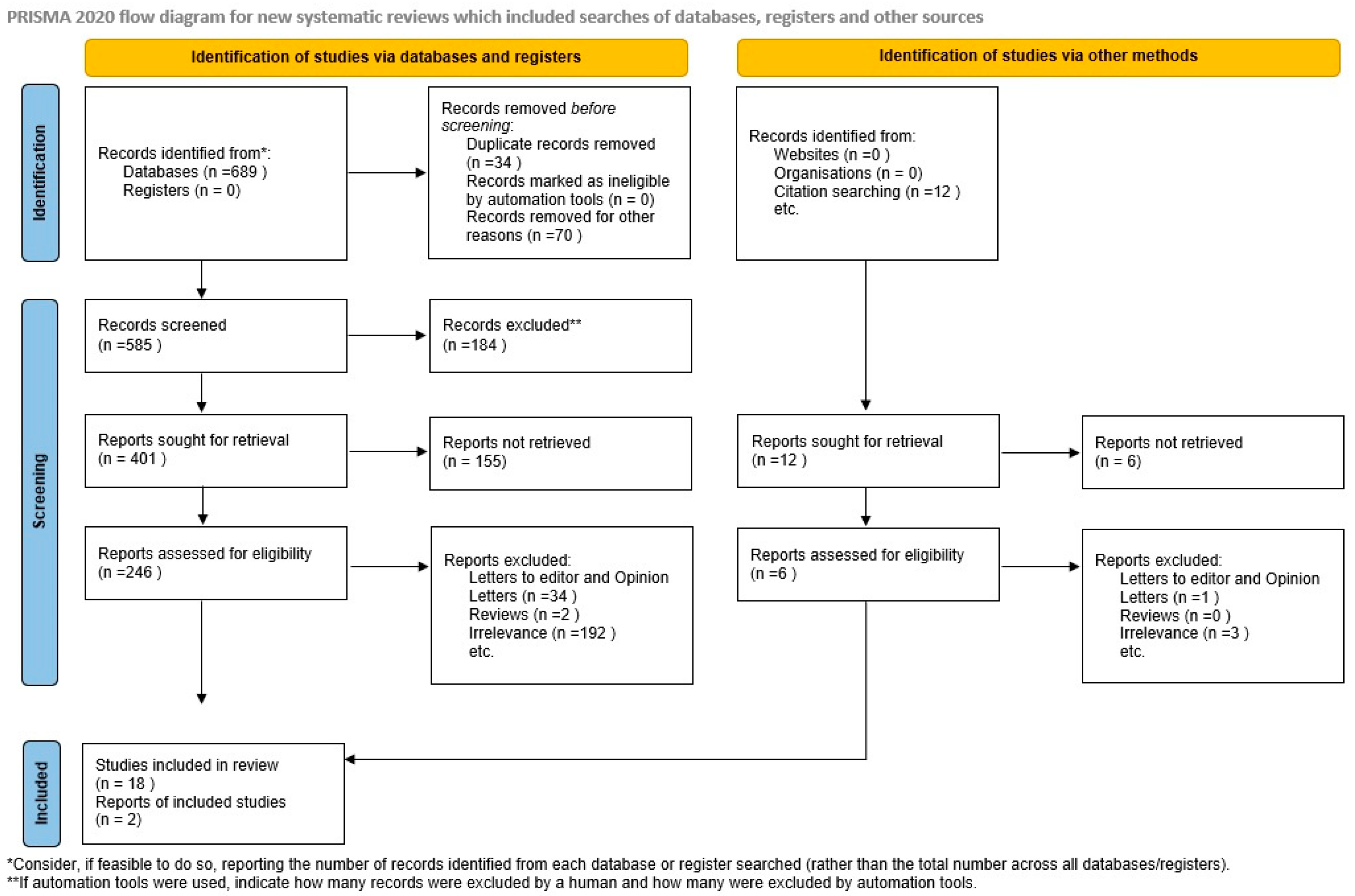
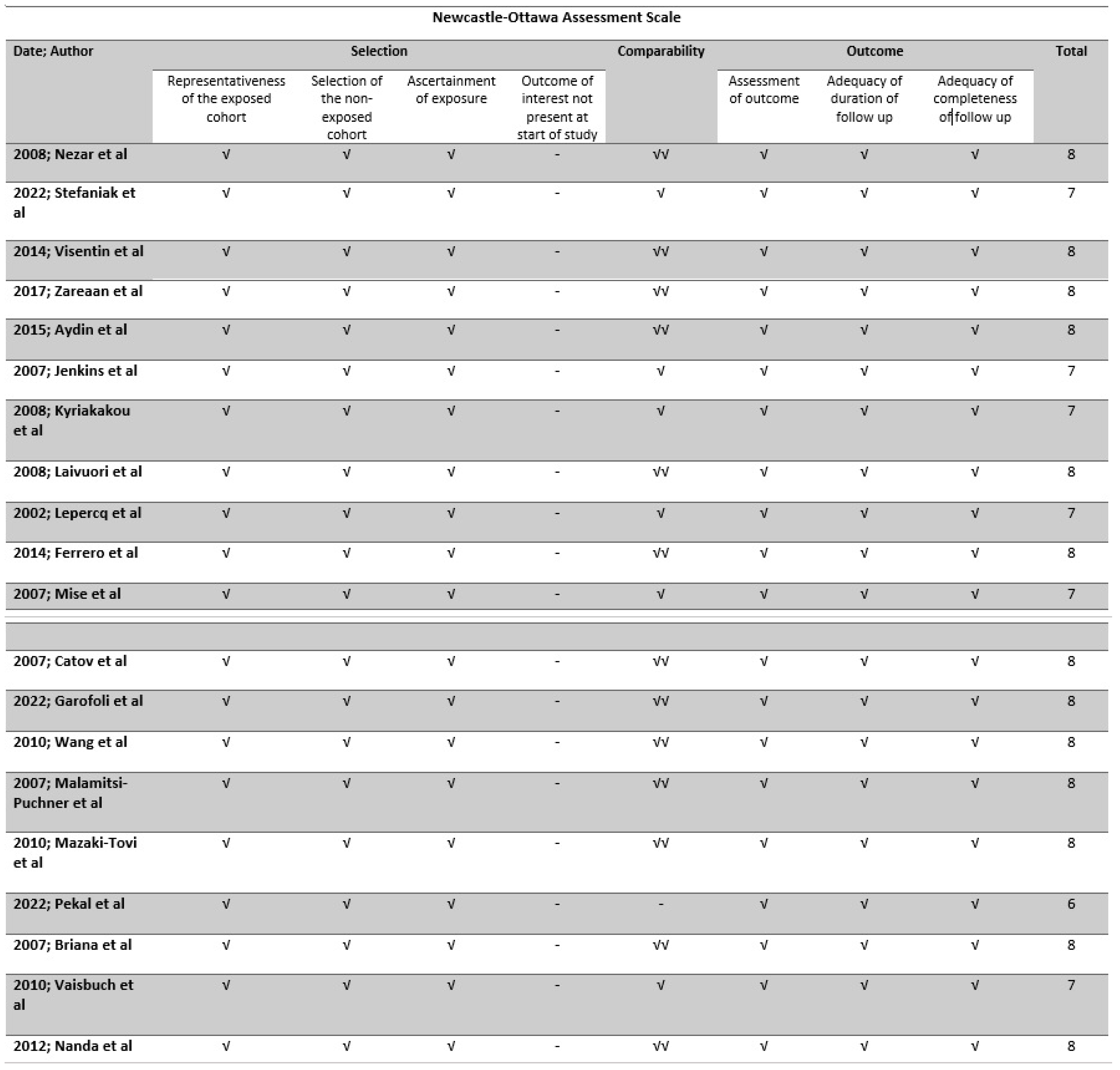

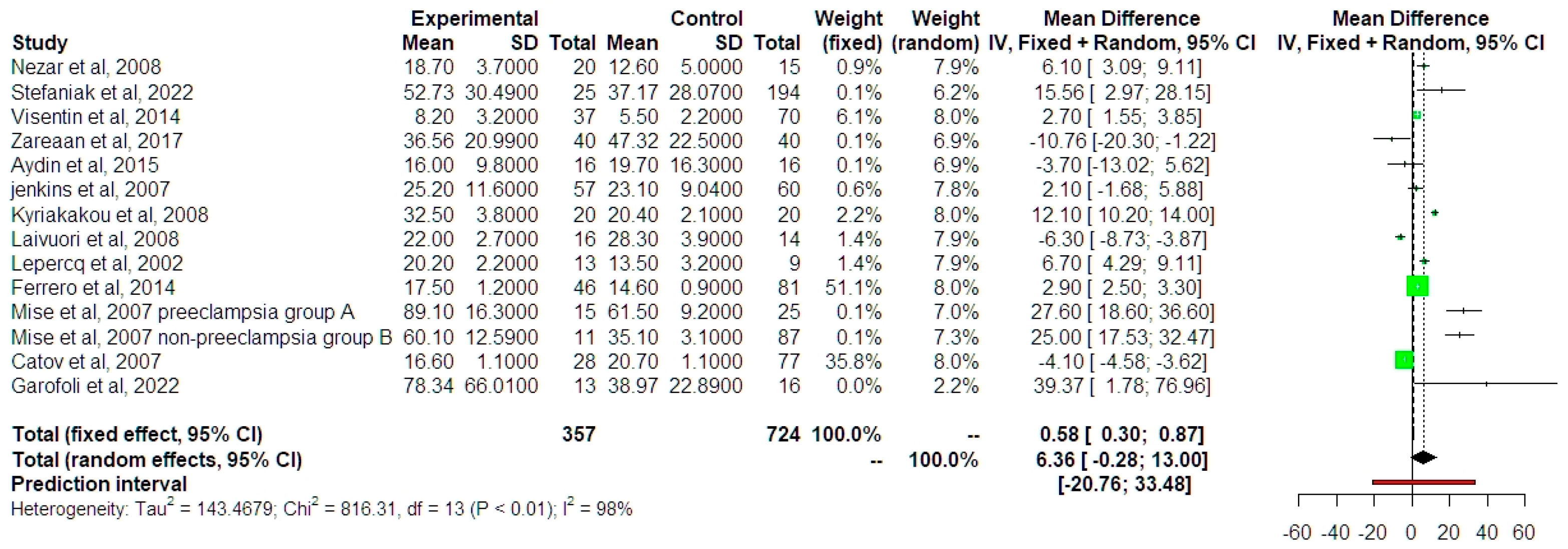
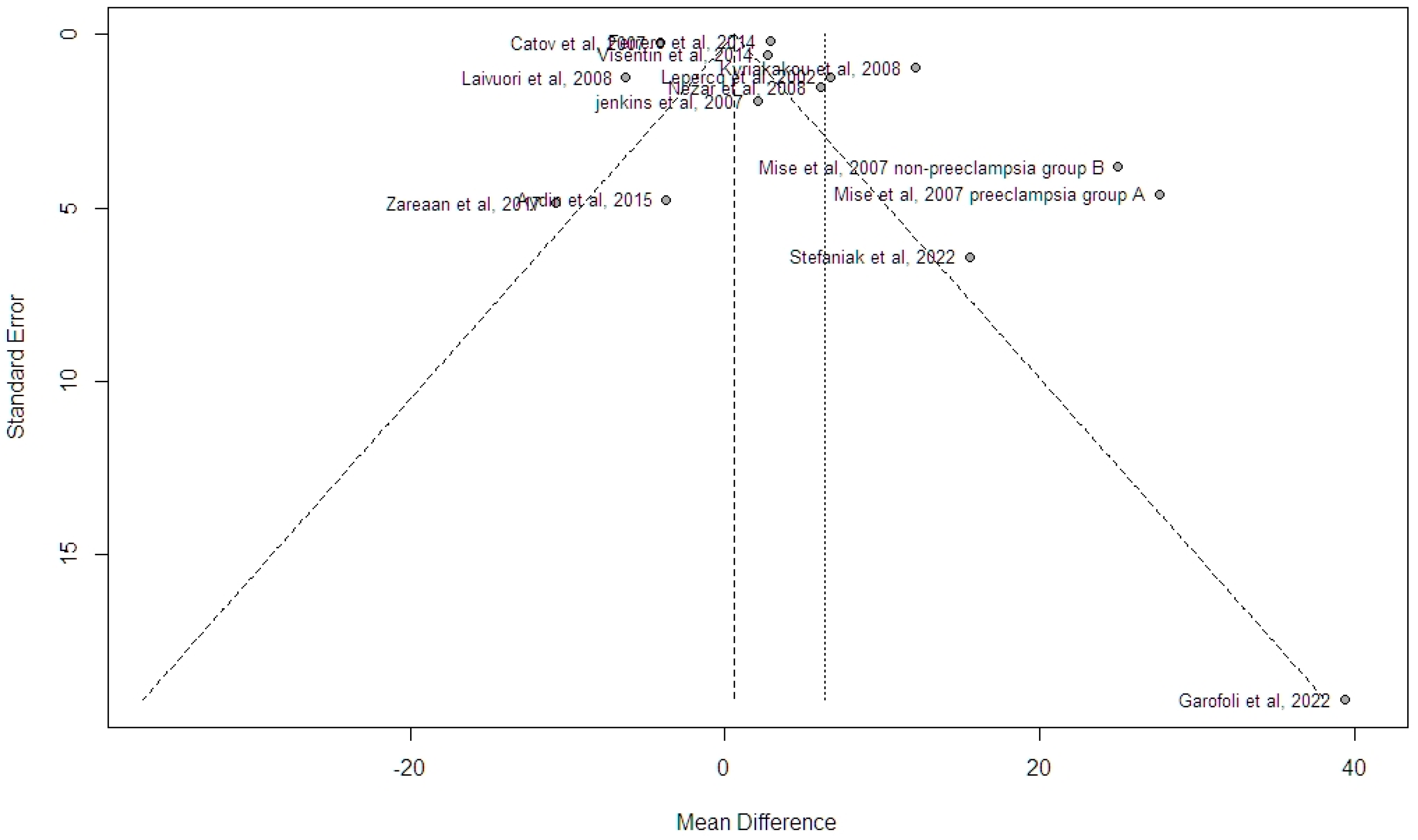
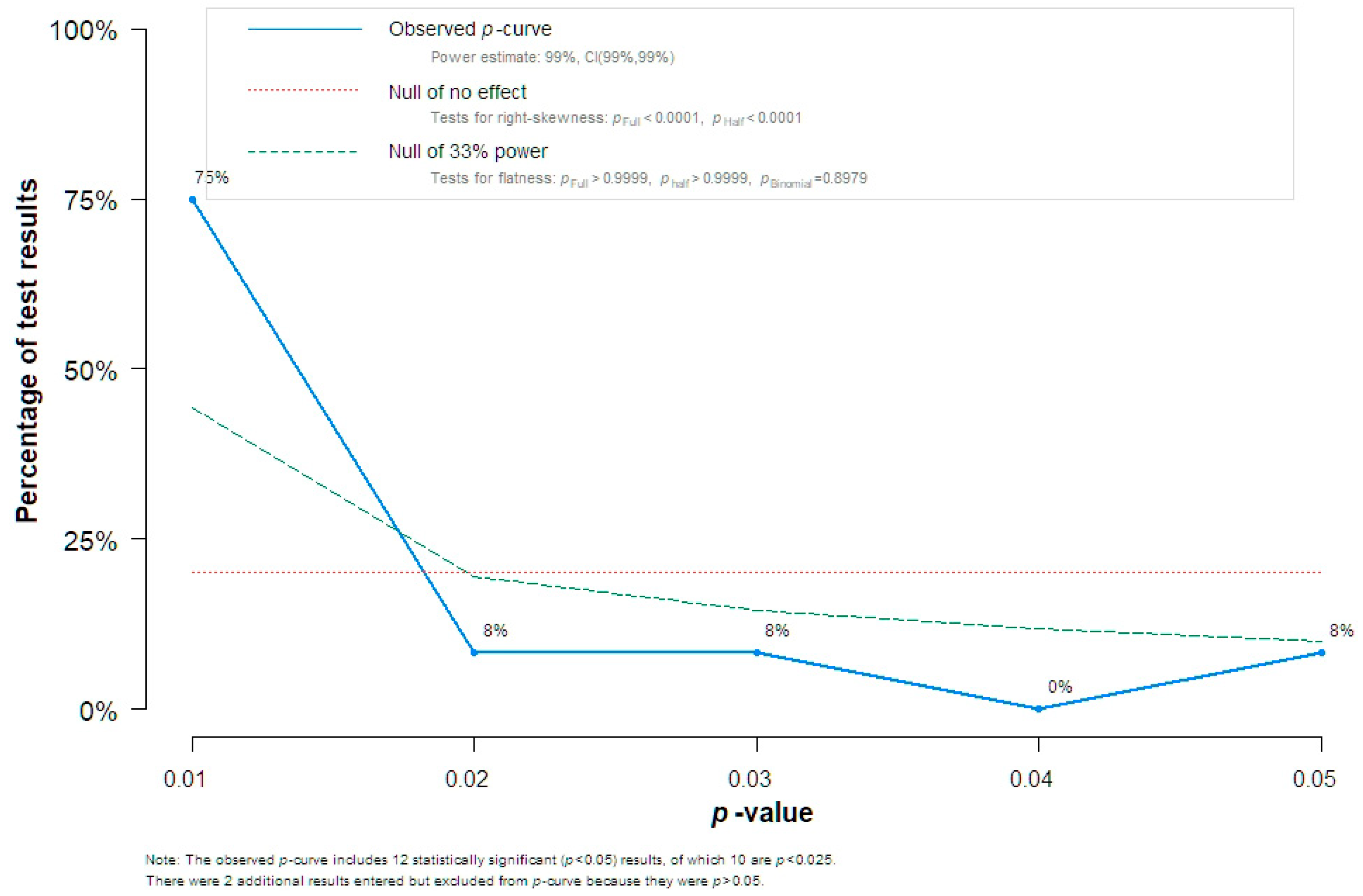


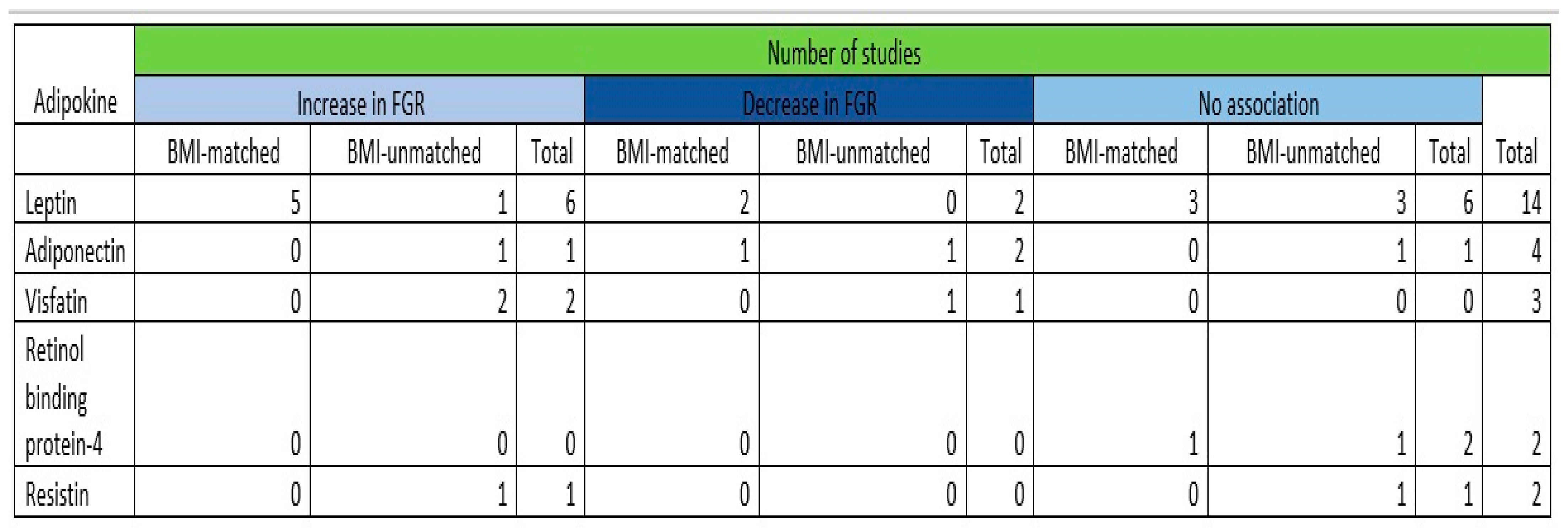
Disclaimer/Publisher’s Note: The statements, opinions and data contained in all publications are solely those of the individual author(s) and contributor(s) and not of MDPI and/or the editor(s). MDPI and/or the editor(s) disclaim responsibility for any injury to people or property resulting from any ideas, methods, instructions or products referred to in the content. |
© 2024 by the authors. Licensee MDPI, Basel, Switzerland. This article is an open access article distributed under the terms and conditions of the Creative Commons Attribution (CC BY) license (https://creativecommons.org/licenses/by/4.0/).
Share and Cite
Sapantzoglou, I.; Vlachos, D.-E.; Papageorgiou, D.; Varthaliti, A.; Rodolaki, K.; Daskalaki, M.A.; Psarris, A.; Pergialiotis, V.; Stavros, S.; Daskalakis, G.; et al. Maternal Blood Adipokines and Their Association with Fetal Growth: A Meta-Analysis of the Current Literature. J. Clin. Med. 2024, 13, 1667. https://doi.org/10.3390/jcm13061667
Sapantzoglou I, Vlachos D-E, Papageorgiou D, Varthaliti A, Rodolaki K, Daskalaki MA, Psarris A, Pergialiotis V, Stavros S, Daskalakis G, et al. Maternal Blood Adipokines and Their Association with Fetal Growth: A Meta-Analysis of the Current Literature. Journal of Clinical Medicine. 2024; 13(6):1667. https://doi.org/10.3390/jcm13061667
Chicago/Turabian StyleSapantzoglou, Ioakeim, Dimitrios-Efthymios Vlachos, Dimitrios Papageorgiou, Antonia Varthaliti, Kalliopi Rodolaki, Maria Anastasia Daskalaki, Alexandros Psarris, Vasilios Pergialiotis, Sofoklis Stavros, Georgios Daskalakis, and et al. 2024. "Maternal Blood Adipokines and Their Association with Fetal Growth: A Meta-Analysis of the Current Literature" Journal of Clinical Medicine 13, no. 6: 1667. https://doi.org/10.3390/jcm13061667
APA StyleSapantzoglou, I., Vlachos, D.-E., Papageorgiou, D., Varthaliti, A., Rodolaki, K., Daskalaki, M. A., Psarris, A., Pergialiotis, V., Stavros, S., Daskalakis, G., & Papapanagiotou, A. (2024). Maternal Blood Adipokines and Their Association with Fetal Growth: A Meta-Analysis of the Current Literature. Journal of Clinical Medicine, 13(6), 1667. https://doi.org/10.3390/jcm13061667






